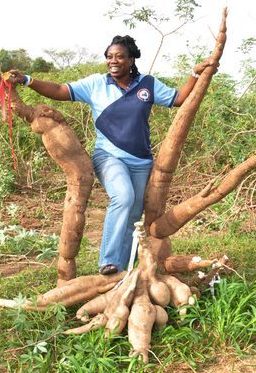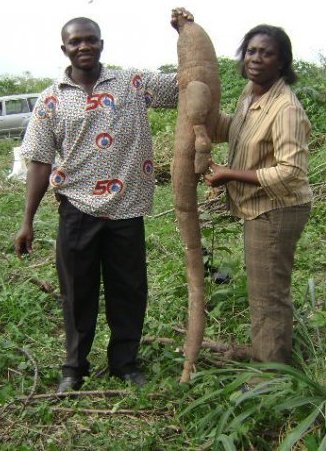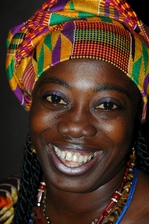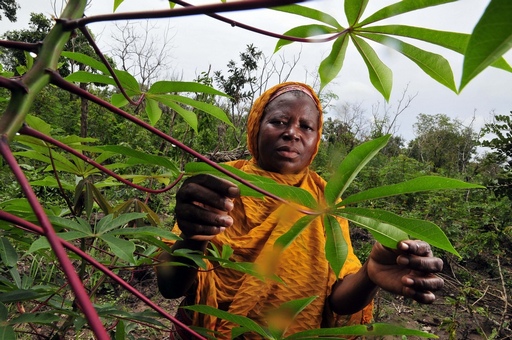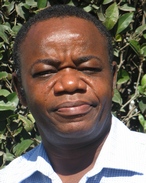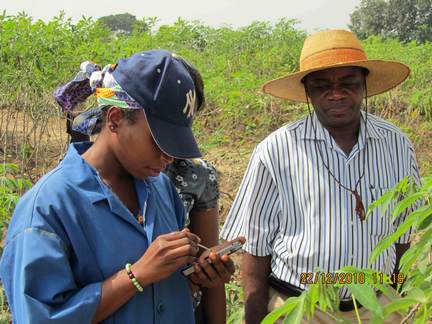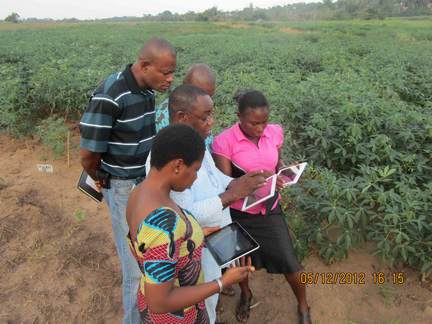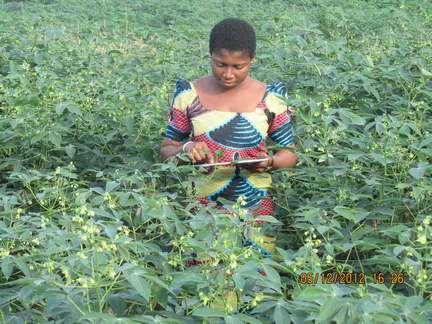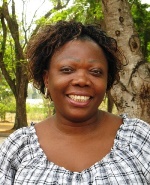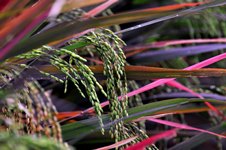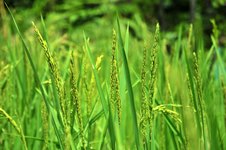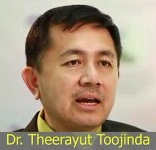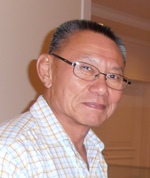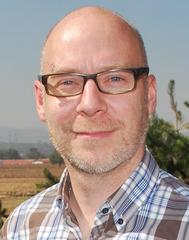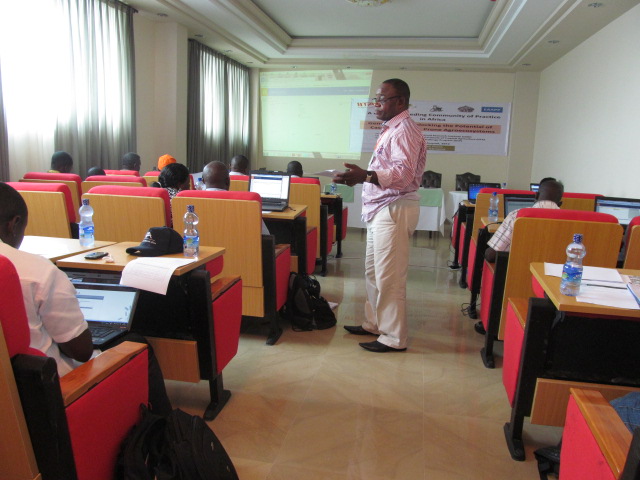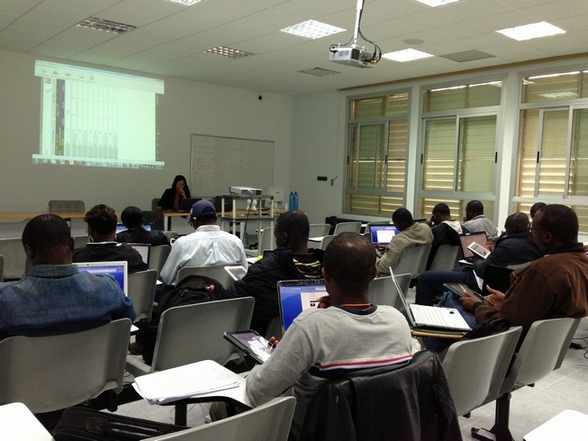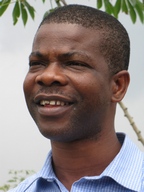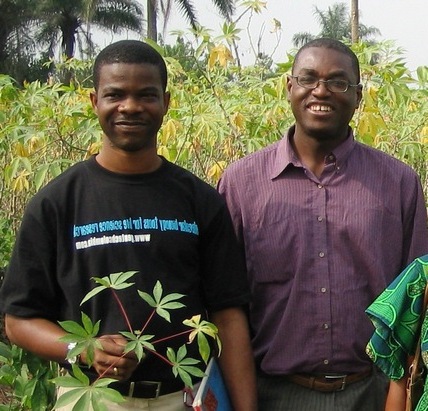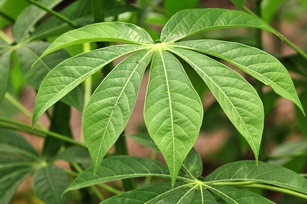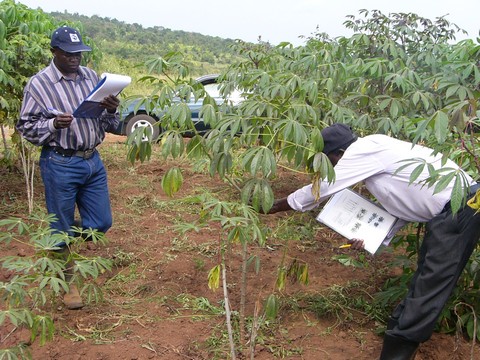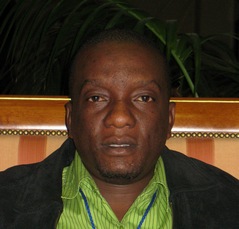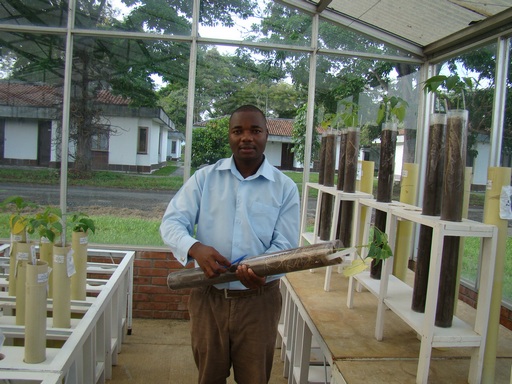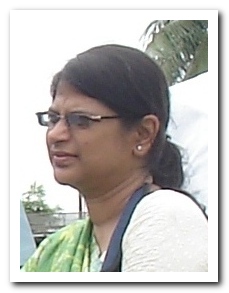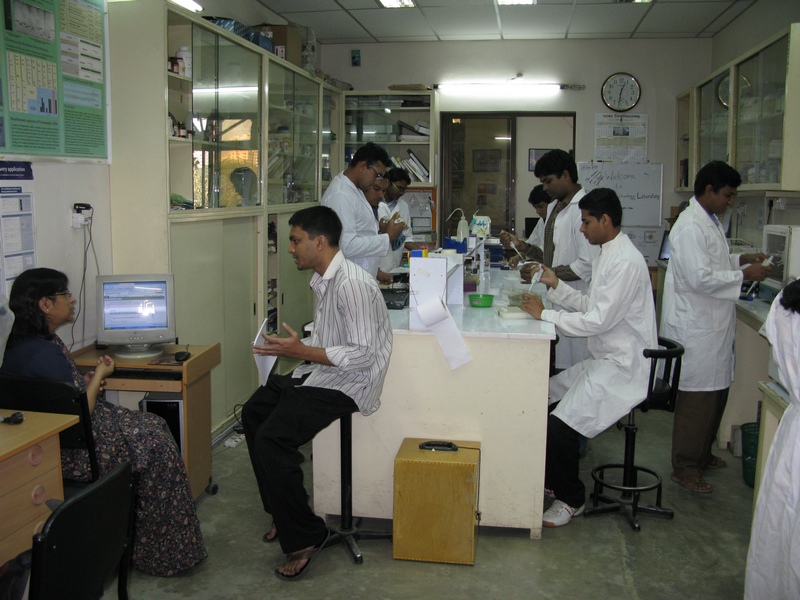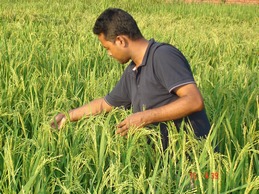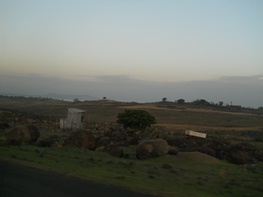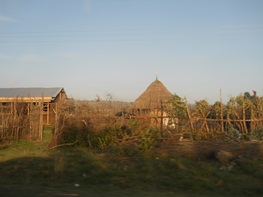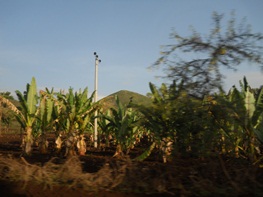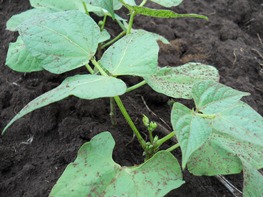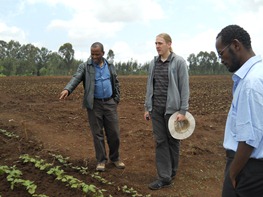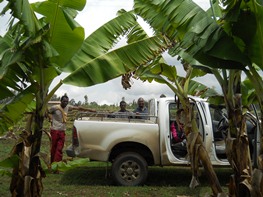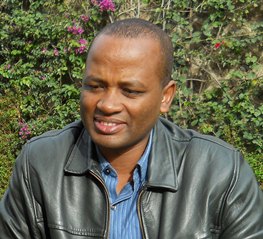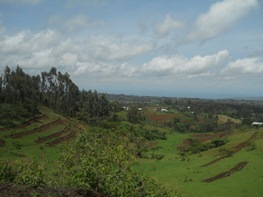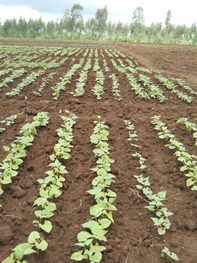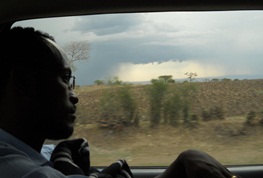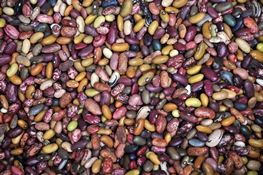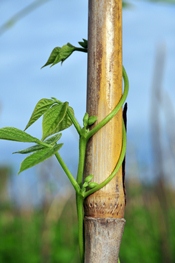Our guest today is Jeff Ehlers (pictured), Programme Officer at the Bill & Melinda Gates Foundation. Jeff’s an old friend of GCP, most familiar to the GCP community in his immediate past stomping grounds at the University of California, Riverside (UCR), USA, leading our research to improve cowpea production in the tropics, for which sunny California offers a perfect spot for effective phenotyping. Even then, Jeff was not new to CGIAR, as we’ll see from his career crossings. But let’s not get ahead of ourselves in narrating Jeff’s tale. First, what would high-end cowpea research have to do with crusading and catapults? Only Jeff can tell us, so please do read on!
The GCP model was a very important way of doing business for CGIAR and the broader development community, enabling partnerships between international research institutes, country programmes and CGIAR. This is particularly important as the possibilities of genomics-led breeding become even greater…If anything, we need to see more of this collaborative model.”
Growing green, sowing the seed, trading glory for grassroots
Growing up in USA’s Golden State of California, green-fingered Jeff had a passion for cultivating the land rather than laboratory samples, harbouring keen ambitions to become a farmer. This did not change with the years as he transited from childhood to adolescence. The child grew into a youth who was an avid gardener: in his student days, Jeff threw his energy into creating a community garden project ‒ an initiative which promptly caught the eye of his high school counsellor, who suggested Jeff give the Plant Science Department at UCR a go for undergraduate studies.
And thus the seeds of a positively blooming career in crop research were sown. However, remaining true to the mission inspired by his former community-centred stomping grounds, a grassroots focus triumphed over glory-hunting for Jeff, who – no stranger to rolling his sleeves up and getting his fingers into the sod – found himself, when at the University of California, Davis, for his advanced studies, embarking on what was to become a lifelong undertaking, first at the International Institute of Tropical Agriculture (IITA) and then at UCR, dedicated to a then under-invested plant species straggler threatening to fall by the research world’s wayside. With a plethora of potential genomic resources and modern breeding tools yet to be tapped into, Jeff’s cowpea crusade had begun in earnest…
GCP’s TLI was essential in opening that door and putting us on the path to increased capability – both for cowpea research enablement and human capacity”
Straggler no more: stardom beckons, and a place at the table for the ‘orphan’
And waiting in the wings to help Jeff along his chosen path was the Generation Challenge Programme (GCP), which, in 2007, commissioned Jeff’s team to tackle the cowpea component of the flagship Tropical Legumes I (TLI) project, implemented by GCP under the Legumes Research Initiative. TLI is mainly funded by the Bill & Melinda Gates Foundation. The significance of this project, Jeff explains, was considerable: “The investment came at a very opportune time, and demonstrated great foresight on the part of both GCP and the Foundation.” Prior to this initiative, he further explains, “there had been no investment by anyone else to allow these orphan crops to participate in the feast of technologies and tools suddenly available and that other major crops were aggressively getting into. Before GCP and Gates funding for TLI came along, it was impossible to think about doing any kind of modern breeding in the orphan grain legume crops. GCP’s TLI was essential in opening that door and putting us on the path to increased capability – both for cowpea research enablement and human capacity.”
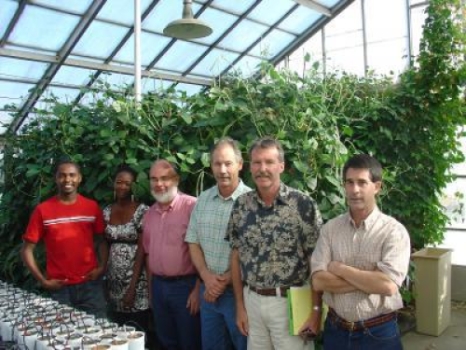
Flashback: UCR cowpea team in 2009. Left to right: Wellington Muchero, Ndeye Ndack Diop (familiar, right?!), Raymond Fenton, Jeff Ehlers, Philip Roberts and Timothy Close in a greenhouse on the UCR campus, with cowpeas in the background. Ndeye Ndack and Jeff seem to love upstaging each other. She came to UCR as a postdoc working under Jeff, then she moved to GCP, with oversight over the TLI project, thereby becoming Jeff’s boss, then he moved to the Foundation with oversight over TLI. So, what do you think might be our Ndeye Ndack’s next stop once GCP winds up in 2014? One can reasonably speculate….!
Of capacity building, genomics and ‘X-ray’ eyes
This capacity-building cornerstone – which, in the case of the TLI project, is mainly funded by the European Commission – is, says Jeff, a crucial key to unlocking the potential of plant science globally. “The next generation of crop scientists ‒ particularly breeders ‒ need to be educated in the area of genomics and genomics-led breeding.”
While stressing the need for robust conventional breeding efforts, Jeff continues: ”Genomics gives the breeder X-ray eyes into the breeding programme, bringing new insights and precision that were previously unavailable.”
In this regard, Jeff has played a leading role in supporting skill development and organising training for his team members and colleagues across sub-Saharan Africa, meaning that partners from Mozambique, Burkina Faso and Senegal, among others, are now, in Phase II of the TLI project, moving full steam ahead with marker-assisted and backcross legume breeding at national level, thanks to the genotyping platform and genetic fingerprints from Phase I of the project. The genotyping platform, which is now publicly available to anyone looking to undertake marker-assisted breeding for cowpeas, is being widely used by research teams not only in Africa but also in China. Thanks in part then to Jeff and his team, the wheels of the genomics revolution for cowpeas are well and truly in motion.
Undergoing the transition from phenotypic old-school plant breeder to modern breeder with all the skills required was a struggle…it was challenging to teach others the tools when I didn’t know them myself!…without GCP, I would not have been able to grow in this way.”
Talking about a revolution, comrades-in-arms, and a master mastering some more
But as would be expected, the road to revolution has not always been entirely smooth. Reflecting on some of the challenges he encountered in the early TLI days, and highlighting the need to invest not only in new students, but also in upgrading the existing skills of older scientists, Jeff tells of a personal frustration that had him battling it out alongside the best of them: “Undergoing the transition from phenotypic old-school plant breeder to modern breeder with all the skills required was a struggle,” he confides, continuing: “It was challenging to teach others the tools when I didn’t know them myself!”
Thus, in collaboration with his cowpea comrades from the global North and South, Jeff braved the steep learning curve before him, and came out on the other side smiling – an accomplishment he is quick to credit to GCP: “It was a very interesting and fruitful experience, and without GCP, I would not have been able to grow in this way,” he reveals. Holding the collaborative efforts facilitated by the broad GCP network particularly dear, Jeff continues: “The GCP model was a very important way of doing business for CGIAR and the broader development community, enabling partnerships between international research institutes, country programmes and CGIAR. This is particularly important as the possibilities of genomics-led breeding become even greater…If anything, we need to see more of this collaborative model.”
GCP’s Integrated Breeding Platform addresses the lack of modern breeding skills in the breeding community as a whole, globally…The Platform provides extremely valuable and much-needed resources for many public peers around the world, especially in Africa…”
One initiative which has proved especially useful in giving researchers a leg up in the mastery of modern breeding tools, Jeff asserts, is GCP’s Integrated Breeding Platform (IBP): “IBP addresses the lack of modern breeding skills in the breeding community as a whole, globally. By providing training in the use of genomic tools that are becoming available, from electronic capture of data through to genotyping, phenotyping, and all the way to selective decision-making and analysis of results, IBP will play a critical role in helping folks to leverage on the genomics revolution that’s currently unfolding,” Jeff enthuses, expanding: “The Platform provides extremely valuable and much-needed resources for many public peers around the world, especially in Africa where such one-off tools that are available commercially would be otherwise out of reach.”
Conqueror caparisoned to catapult: life on the fast lane and aiming higher
Well-versed in conquering the seemingly unobtainable, Jeff shares some pearls of wisdom for young budding crop scientists:”Be motivated by the mission, and the ideas and the science, and not by what’s easy, or by what brings you the most immediate gratification,” he advises, going on to explain: “Cowpeas have been through some really tough times. Yet, my partners and I stuck it out, remained dedicated and kept working.” And the proof of Jeff’s persistence is very much in the pudding, with his team at UCR having become widely acclaimed for their success in catapulting cowpeas into the fast lane of crop research.
It was a success that led him to the hallways of the Bill & Melinda Gates Foundation, where, after two decades at UCR, Jeff is currently broadening his legume love affair to also embrace beans, groundnuts, chickpeas, pigeonpeas and soya beans.
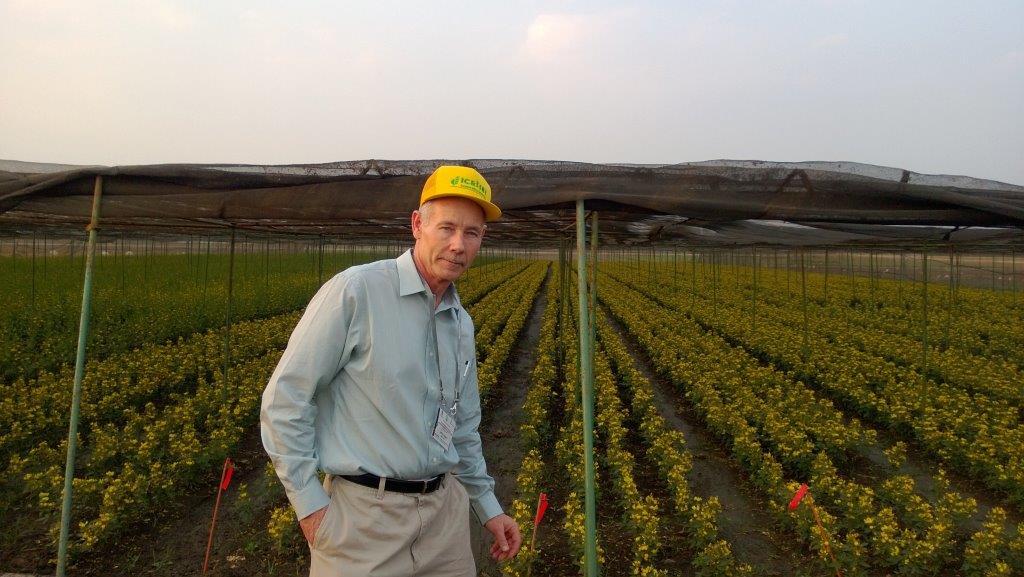
February 2014: Jeff donning his (now-not-so-)new Gates hat and on the road, visiting ICRISAT in India. Behind him is an ICRISAT experimental field of early-maturing pigeonpeas. Here, our conquering crusader is ‘helmeted’ in an ICRISAT cap, even if not horsed and caparisoned for this ‘peacetime’ pigeonpea mission!
On his future professional aspirations, he says: “The funding cut-backs for agriculture which started before 1990 or so gutted a lot of the capacity in the public sector, both in the national programmes in Africa but also beyond. I hope to play a role in rebuilding some of the capacity to ensure that people take full advantage of the technical resources available, and to enable breeding programmes to function at a higher level than they do now.”

Jeff (foreground) inspecting soya bean trials in Kakamega, Kenya, in January 2013. Next to Jeff is Emmanuel Monyo, the coordinator of the Tropical Legumes II (TLII) project – TLI’s twin – whose brief is seed multiplication. TLII is therefore responsible for translating research outputs from TLI into tangible products in the form of improved legume varieties.
Whilst it’s been several years since he donned his wellington boots for the gardening project of his youth, what’s clear in this closing statement is an unremitting and deeply ingrained sense of community spirit – albeit with a global outlook – and a fight for the greater good that remain at the core of Jeff’s professional philosophy today.
No doubt, our cowpea champion and his colleagues have come a long way, with foundations now firmly laid for modern breeding in the crop on a global scale, and – thanks to channels now being established to achieve the same for close relatives of the species – all signs indicate that the best is yet to come!
Links
- Cowpea research
- Cowpea research products
- Legume Research Initiative
- Legumes InfoCentre
- At the time we published this post, this is where Jeff was
- Check out Jeff’s new perch: see more of what he’s been up to – and with whom he’s been hobnobbing – through these thousand-words-worth photos.









